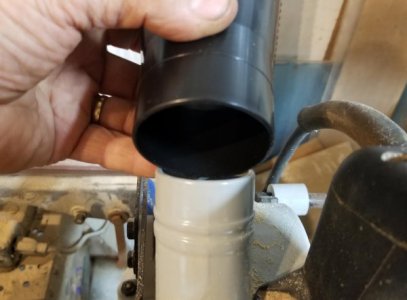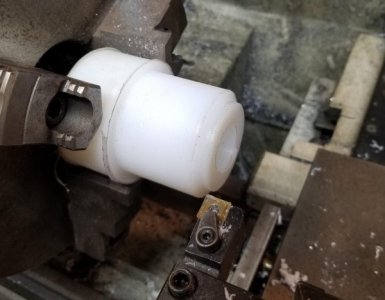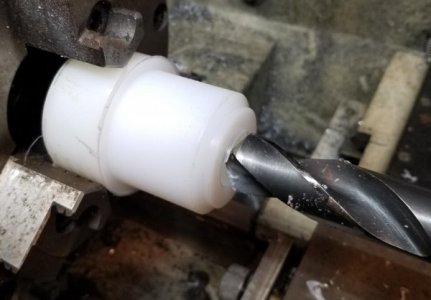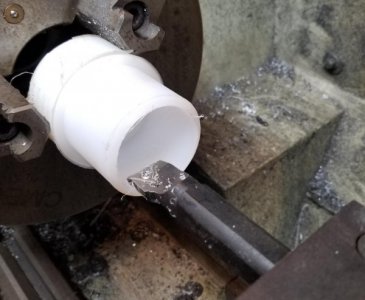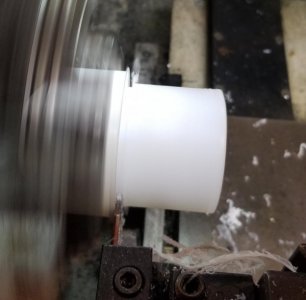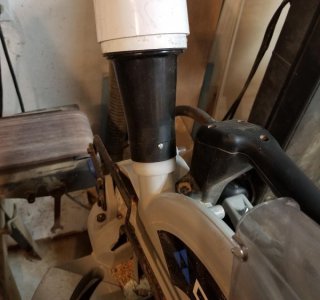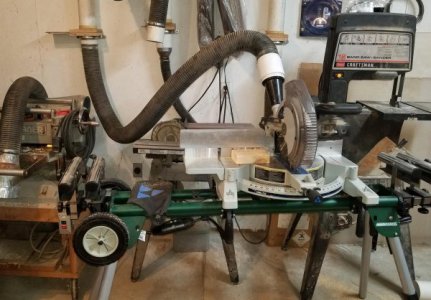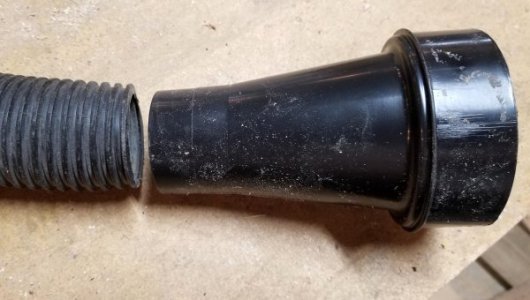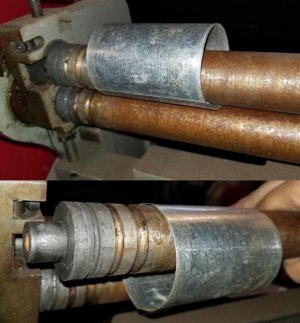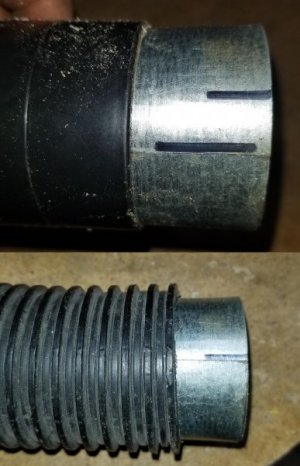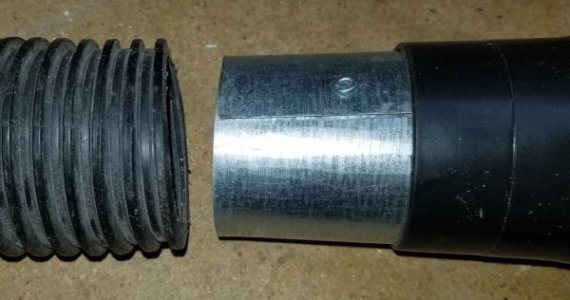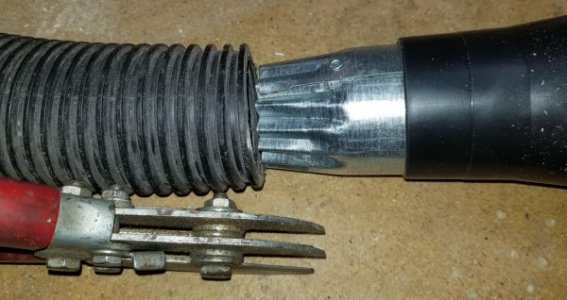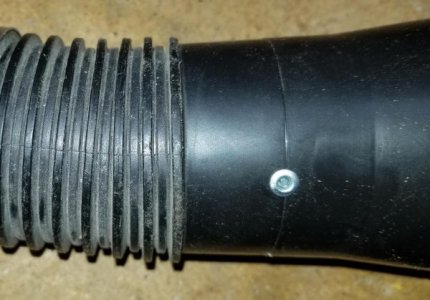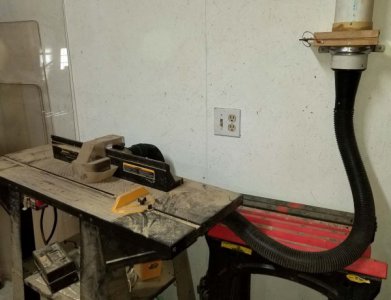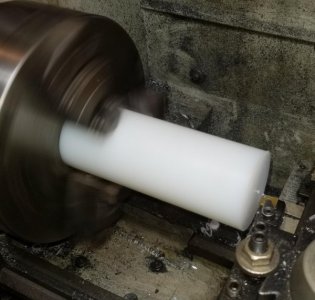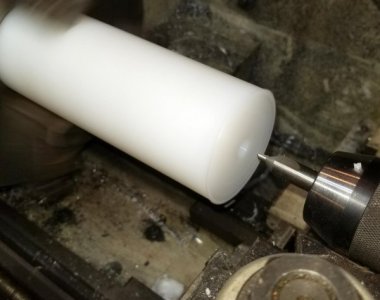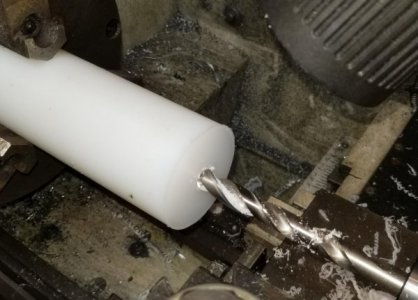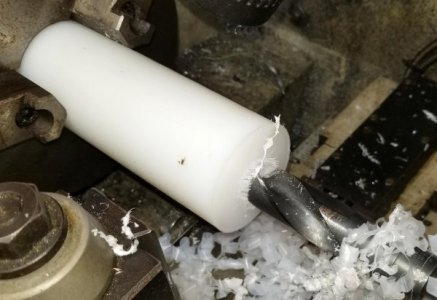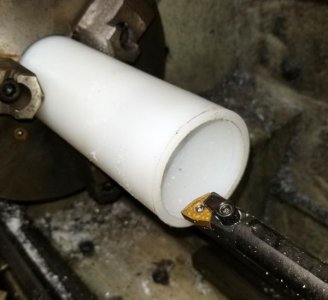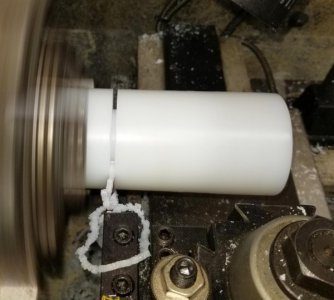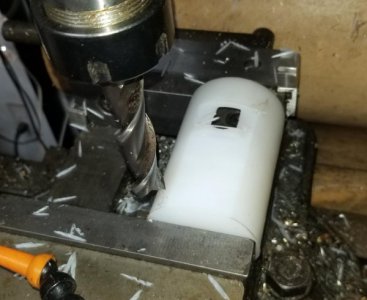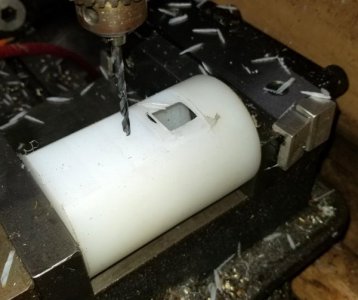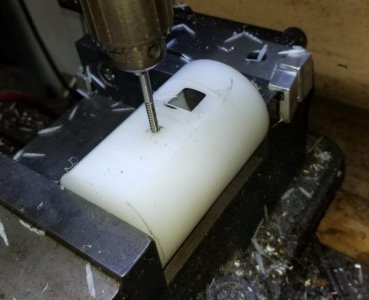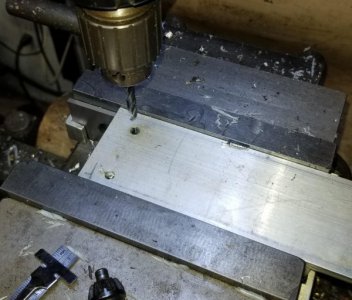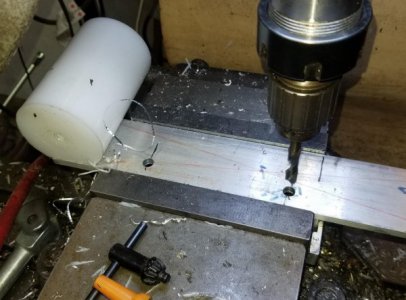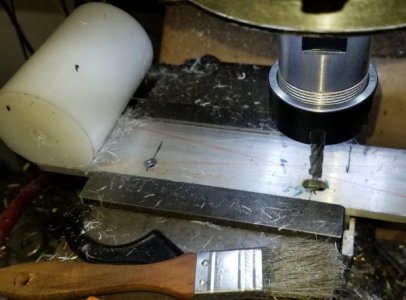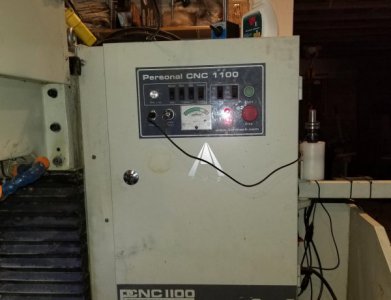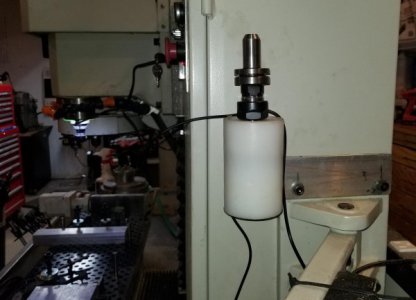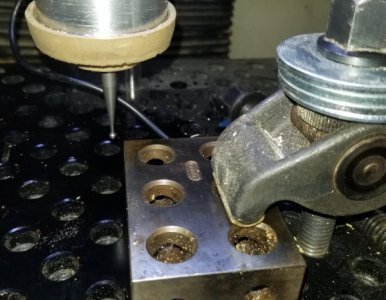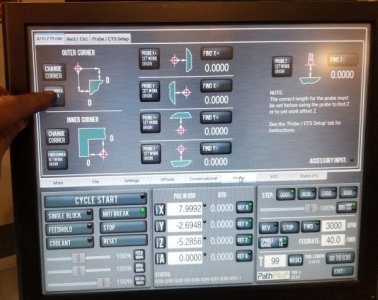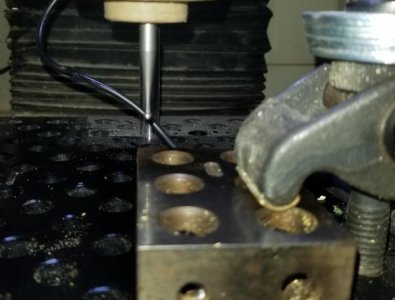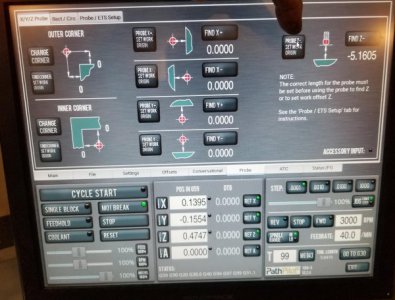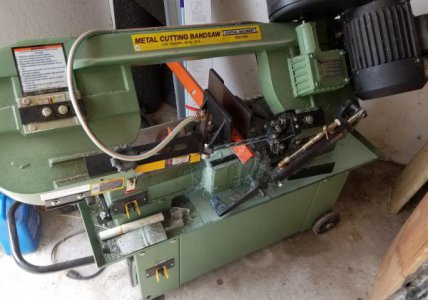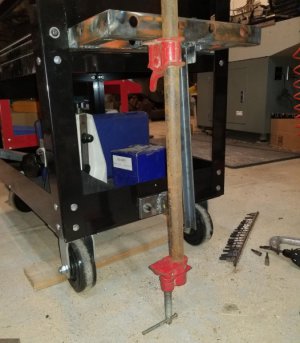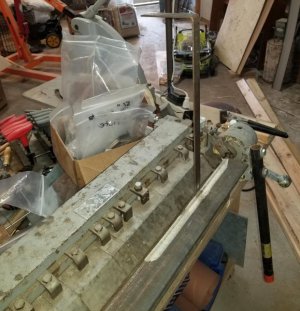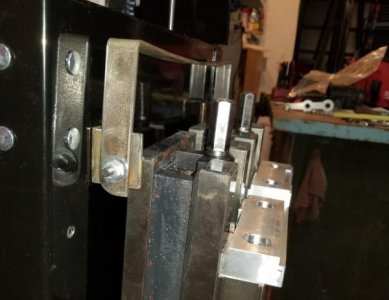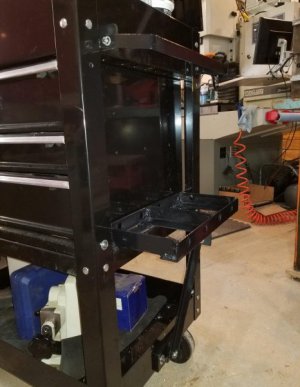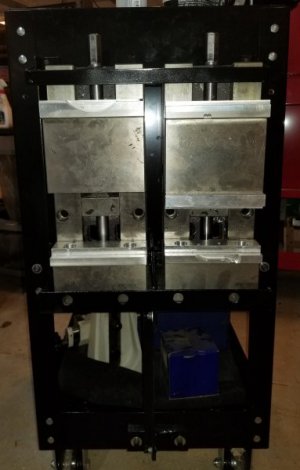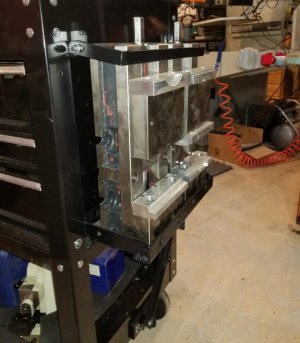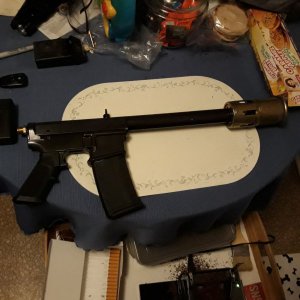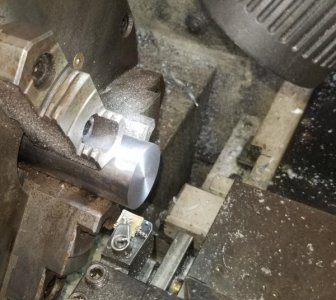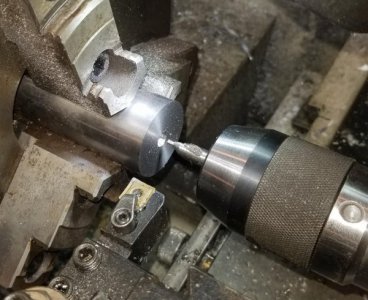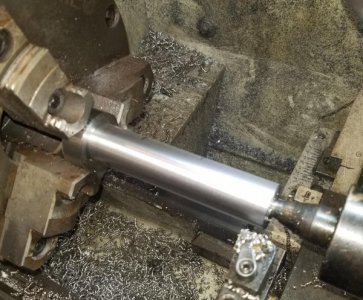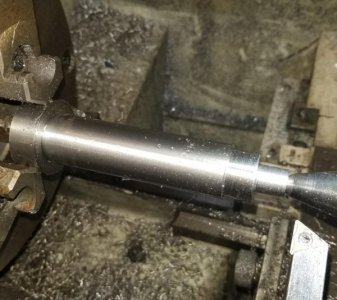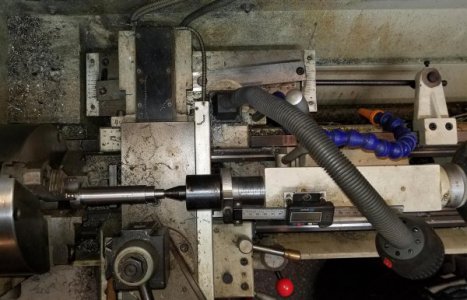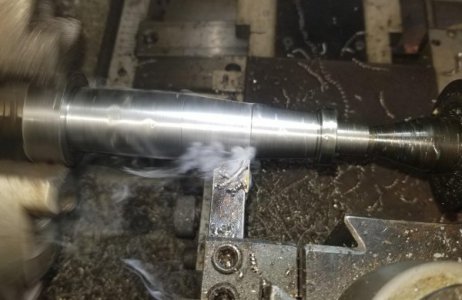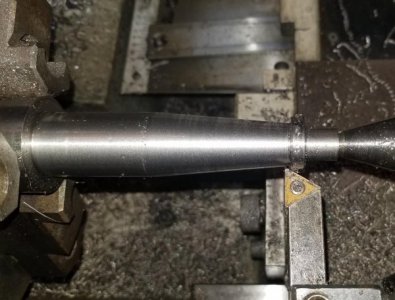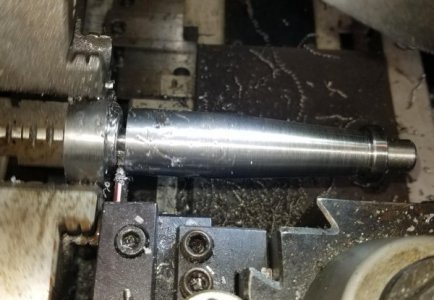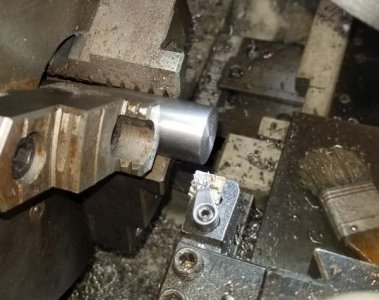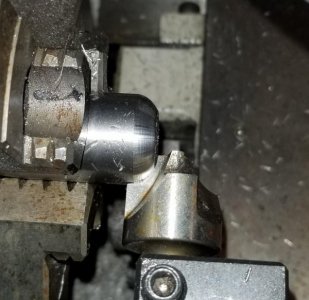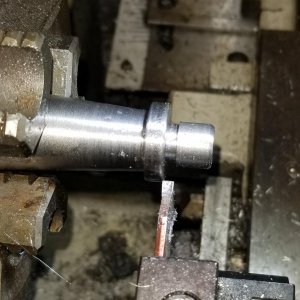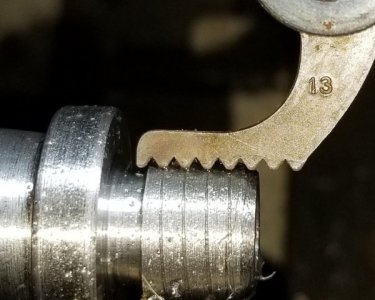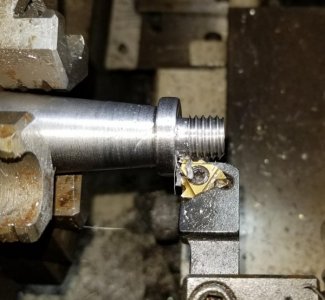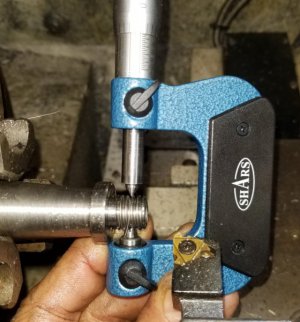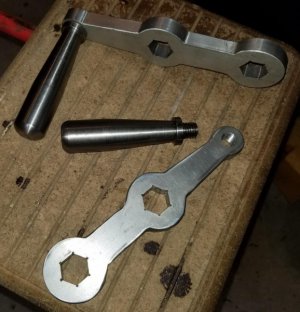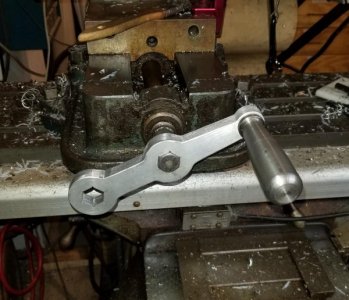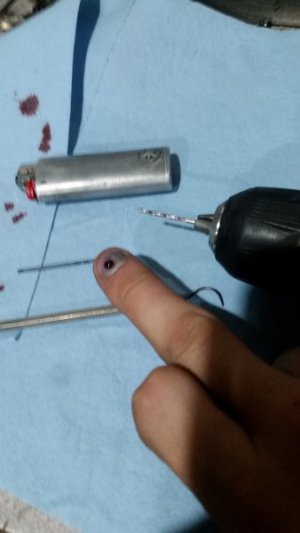- Joined
- Nov 23, 2014
- Messages
- 2,634
Getting caught up on a few Labor Day weekend projects.
POTD was a job for work. I work at the Lansing Delta Township Assembly Plant in Lansing, MI where we build Chevy Traverse and Buick Enclaves. We use a detail to hold the doors open in a fixed position when the cars are painted. The details are removed in the General Assembly plant where the doors are removed for routing to the door line for assembly. The hold-opens go where the check links mount. I didn’t shoot a picture of them, but they have a base that bottoms out on the inside of the door opening, and two fixed hooks that slip over the outside surface of the opening.
Hole in the door metal for the check link. Needed to check the thickness of the metal. The hole is ~1" x 1"; could fit a mic or caliper into the hole.
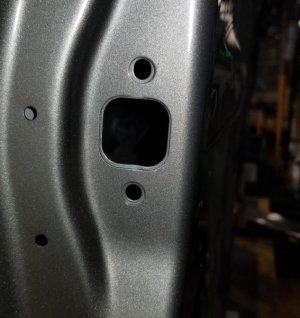
Problem was, the hold-opens are sometimes difficult to remove in General Assembly. They weren’t my design . . . The distance between the surface on the inside of the door and the base of the hook is fixed at ~3 mm. If the door metal build up is thick, or the hook is tight to the base, they twist into place really hard.
The hold-opens could easily be checked for the 3 mm spacing with a feeler gauge. We wanted to check the thickness of the door metal also which was a challenge as the opening is only about 1” x 1”. Couldn’t fit a caliper or standard micrometer into the opening.
I have a hub micrometer someplace that might have worked, but couldn’t find it. So instead I made a Delrin detail to mount a dial indicator. Started by squaring up the Delrin in the mill. Then spot drilled, clearance drilled and reamed a 3/8” hole for the dial indicator. Drilled/tapped a hole for a set screw to lock the indicator in place. Then milled a relief area.
Squaring the Delrin block
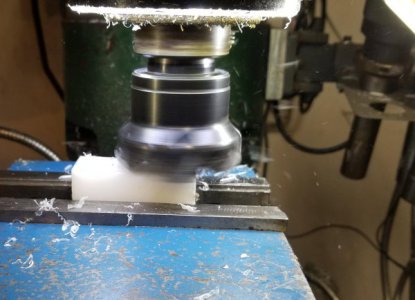
Edge finder on the corner to set up the DRO
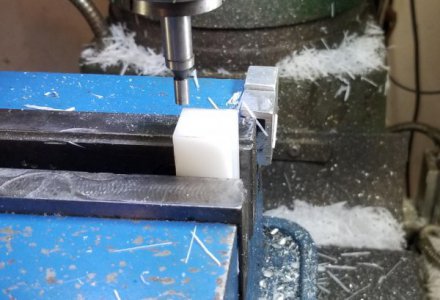
Spot drill the indicator hole
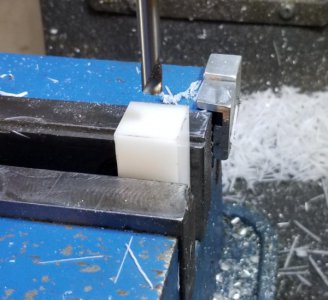
Undersized hole
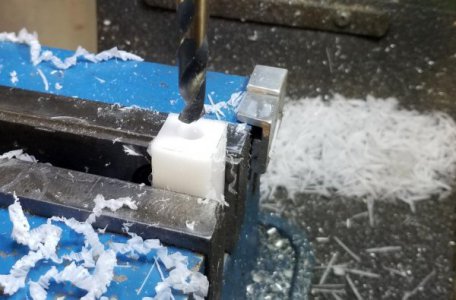
Over-sized reamer
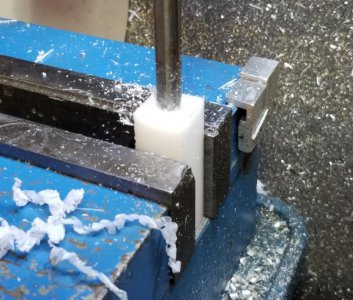
Drilled and tapped a set screw hole to hold the indicator in place
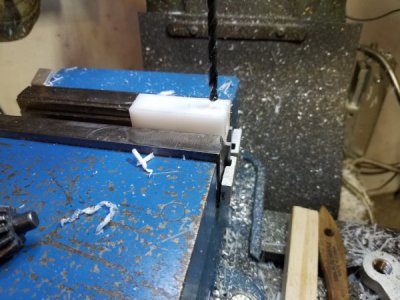
Milled a relief in the middle and test fit the indicator
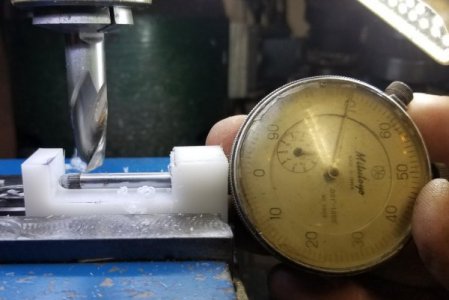
In use, we pull back on the top of the indicator probe, slip the Delrin detail into the door hole, pull back on the Delrin so its anvil is on the inside surface, then release the indicator probe and read the dial. I did a late “engineering change” to narrow the end of the block so it could slip better into the corners.
Pull back on the indicator probe, set the anvil into the door opening, pull back on the block to the inside of the door and release the indicator probe to measure the metal thickness.
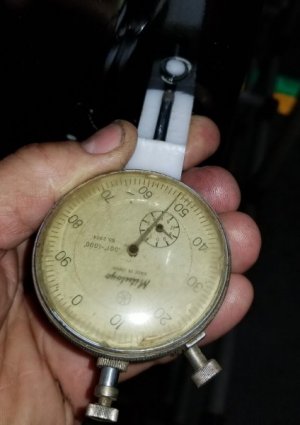
Late "engineering change" to clear away the sides of the anvil area so we could measure into the corners.
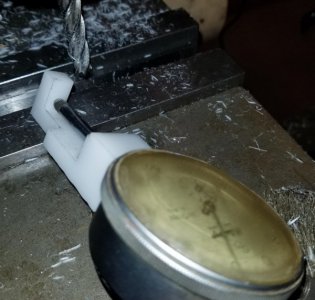
Didn’t take too many checks to see we have variation in the thickness of the door metal build up contributing to the concern. Doesn’t affect the customer as the check link is bolted in place and pulls the metal together, but gonna lead to some more work on the hold-opens. Yeah, I would have gone with a spring-loaded detail so the dimension between the hook and the plate on the hold-opens wasn’t so critical. Guess we’ll have to look at doing it a second time to get it right.
Thanks for looking, Bruce
POTD was a job for work. I work at the Lansing Delta Township Assembly Plant in Lansing, MI where we build Chevy Traverse and Buick Enclaves. We use a detail to hold the doors open in a fixed position when the cars are painted. The details are removed in the General Assembly plant where the doors are removed for routing to the door line for assembly. The hold-opens go where the check links mount. I didn’t shoot a picture of them, but they have a base that bottoms out on the inside of the door opening, and two fixed hooks that slip over the outside surface of the opening.
Hole in the door metal for the check link. Needed to check the thickness of the metal. The hole is ~1" x 1"; could fit a mic or caliper into the hole.

Problem was, the hold-opens are sometimes difficult to remove in General Assembly. They weren’t my design . . . The distance between the surface on the inside of the door and the base of the hook is fixed at ~3 mm. If the door metal build up is thick, or the hook is tight to the base, they twist into place really hard.
The hold-opens could easily be checked for the 3 mm spacing with a feeler gauge. We wanted to check the thickness of the door metal also which was a challenge as the opening is only about 1” x 1”. Couldn’t fit a caliper or standard micrometer into the opening.
I have a hub micrometer someplace that might have worked, but couldn’t find it. So instead I made a Delrin detail to mount a dial indicator. Started by squaring up the Delrin in the mill. Then spot drilled, clearance drilled and reamed a 3/8” hole for the dial indicator. Drilled/tapped a hole for a set screw to lock the indicator in place. Then milled a relief area.
Squaring the Delrin block

Edge finder on the corner to set up the DRO

Spot drill the indicator hole

Undersized hole

Over-sized reamer

Drilled and tapped a set screw hole to hold the indicator in place

Milled a relief in the middle and test fit the indicator

In use, we pull back on the top of the indicator probe, slip the Delrin detail into the door hole, pull back on the Delrin so its anvil is on the inside surface, then release the indicator probe and read the dial. I did a late “engineering change” to narrow the end of the block so it could slip better into the corners.
Pull back on the indicator probe, set the anvil into the door opening, pull back on the block to the inside of the door and release the indicator probe to measure the metal thickness.

Late "engineering change" to clear away the sides of the anvil area so we could measure into the corners.

Didn’t take too many checks to see we have variation in the thickness of the door metal build up contributing to the concern. Doesn’t affect the customer as the check link is bolted in place and pulls the metal together, but gonna lead to some more work on the hold-opens. Yeah, I would have gone with a spring-loaded detail so the dimension between the hook and the plate on the hold-opens wasn’t so critical. Guess we’ll have to look at doing it a second time to get it right.
Thanks for looking, Bruce


